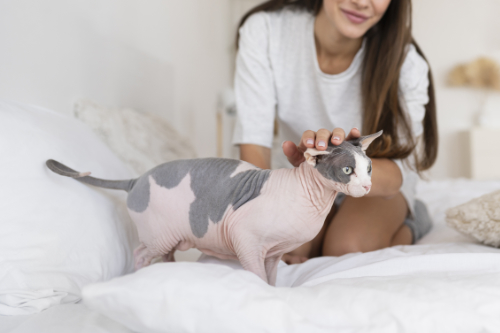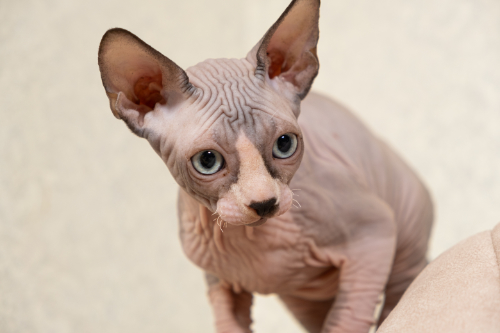More about coloured spots on your cat's skin
Coloured spots on the skin of your cat are an intriguing aspect of their appearance, often overlooked by owners. These spots, found not in the fur but in the underlying skin, can offer valuable insights into a cat’s health and heritage. In this article, we delve into the world of pigment spots on your cat’s skin, beneath its fur.
What are these coloured spots on your cat's skin?
These pigment spots, also known as melanocytic hyperplasia or dermal melanocytosis, arise when the skin contains more melanin-producing cells in a specific area. These cells are called melanocytes, and the pigment they create is known as melanin, responsible not only for the coloured spots on your cat’s skin but also for its fur and eye color. These spots range from small freckle-like dots to large, pronounced patches that cover a significant area. Often, the coloured spots on your cat’s skin have corresponding pigmented hairs, though not always.

What types of coloured spots on your cat's skin are there?
FRECKLES
These are small, flat, light brown spots that appear on the skin. Freckles are commonly seen on cats with lighter fur and are usually not a cause for concern.
NEVUS
Nevi are slightly raised, round or oval pigmented spots on your cat’s skin. They vary in size and color, ranging from light brown to dark brown or even black. While most nevi are benign, their development should be monitored if they change in size, shape, or color.
LENTIGO
Lentigines are flat, dark spots often found on the lips, gums, and eyelids of older cats. They are generally harmless but should be examined by a veterinarian to rule out any underlying health issues.
MELANOMA
In rare cases, coloured spots on your cat’s skin are a melanoma, a type of skin cancer. Melanomas can be aggressive and require prompt medical attention. These spots might exhibit irregular shapes, rapid growth, or bleeding.
How do coloured spots on your cat's skin form?
In most cases, the coloured spots on your cat’s skin are present from birth, often inherited through their DNA from their parents. However, these pigment spots can also develop due to exposure to UV light, particularly in areas with little to no fur. Hormones also contribute to the formation of pigmented spots. Additionally, pigment spots arise in areas subject to constant mechanical friction. For instance, cats that scratch or lick their belly frequently due to itchiness develop gray-brown spots over time.

When should you consult your veterinarian?
While most pigmented spots on your cat’s skin are harmless, it’s important to monitor any changes in their appearance, size, or texture. If you notice any of the following signs, promptly seek advice from your veterinarian:
- Rapid growth of a coloured spot on your cat’s skin.
- Changes in color, shape, or texture of the spot.
- Sores or bleeding at the site of the spot.
- Signs of discomfort, itching, or irritation around the spot.
- New spots that suddenly appear or appear in multiples.
Good luck!
You probably have nothing to worry about if your cat has some coloured spots on his skin. But if you are in doubt, please contact your veterinarian to be sure. Good luck!
